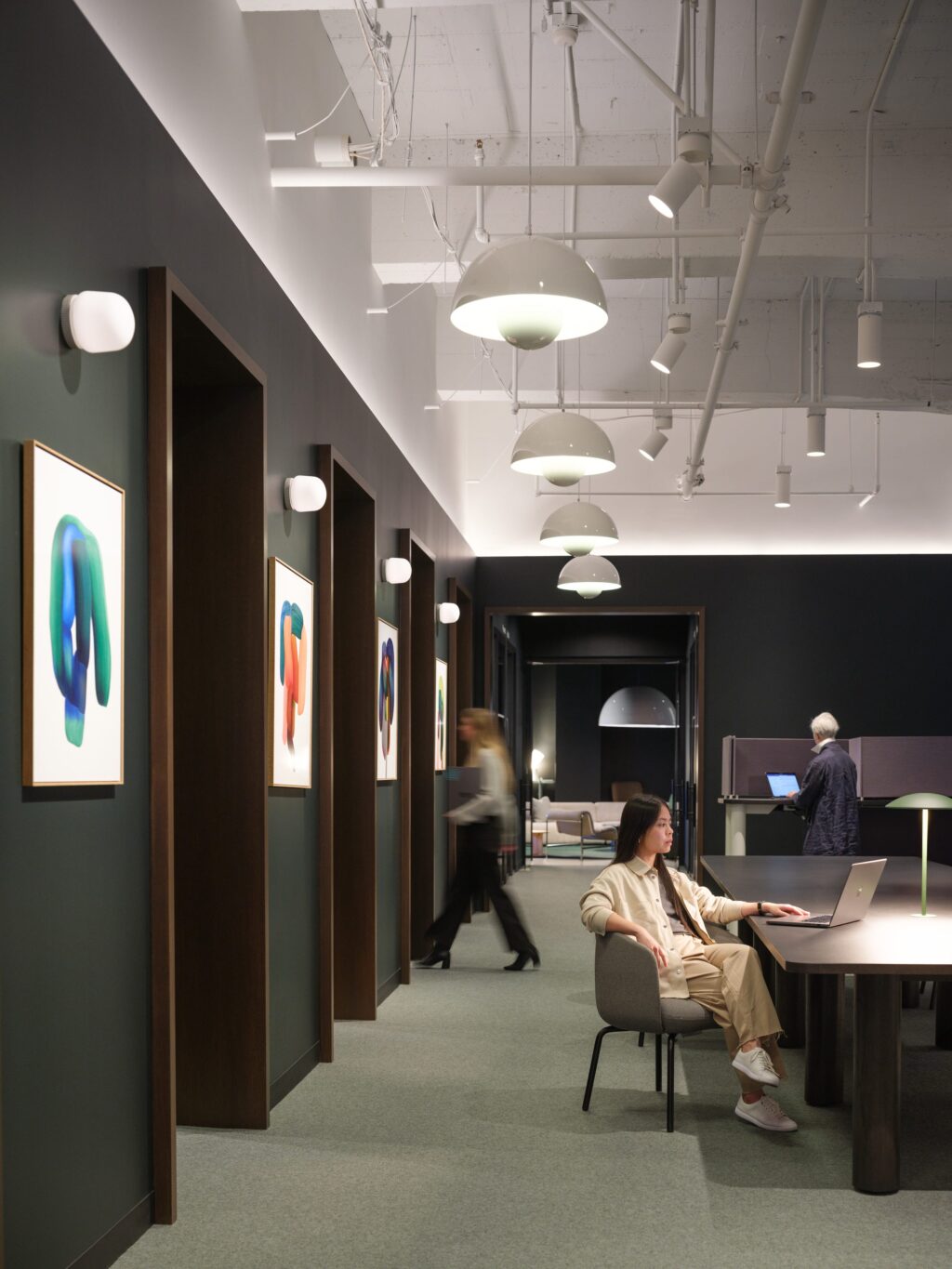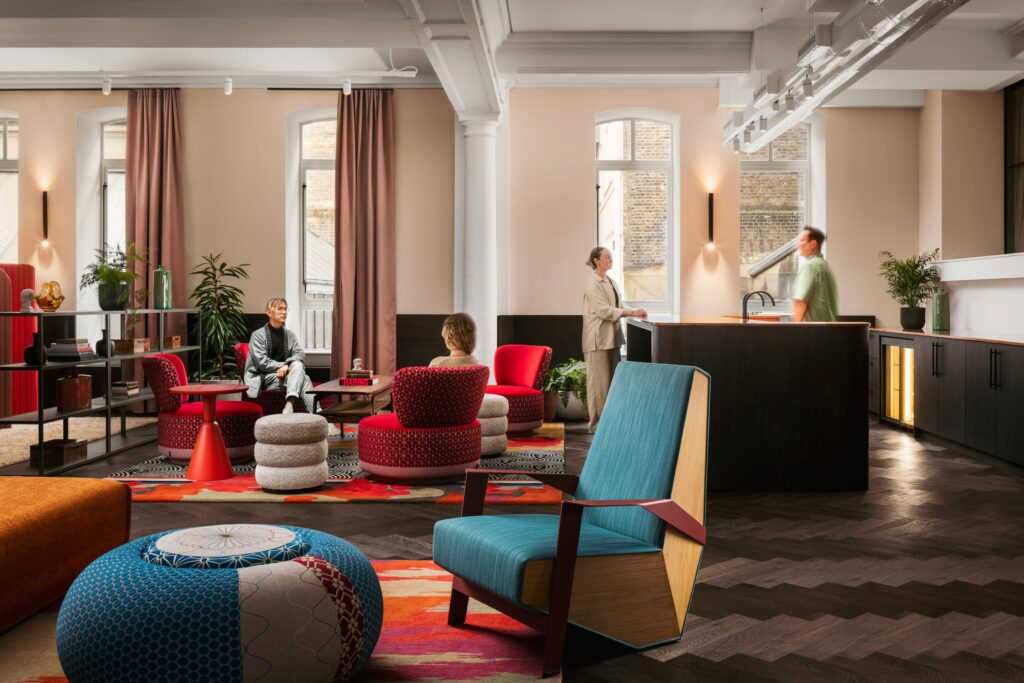- The traditional office environment has shown some resilience despite pandemic-enhanced changes.
- And it's evolving, with transformations including demand for smaller spaces and fancy amenities.
- There's an arms race among some landlords to add better facilities, experts told BI.
The office might not look the same as a few years ago, but it's still kicking.
In the four years since the pandemic shut down many workplaces, there has been more than a little speculation about the prognosis for the office's recovery. Yet, in many cases, the land of carpet squares and fluorescent lighting has proven resilient.
Sure, many sites aren't as full as they once were. US office visits in January were down 42.1% from January 2020 — not long before pandemic lockdowns began — according to figures from Placer.ai, which provides data on foot traffic.
And some companies have given up space. But broadly, the office is hanging on.
Business Insider asked several experts to weigh in on how the places many of us work will continue to evolve. They all agreed the office reset that the pandemic ushered in isn't over yet.
"We really believe that the workplace landscape has permanently changed," Diane Hoskins, global cochair of the design and architecture firm Gensler, told BI. "We're going through this transformation cycle more quickly than we've ever seen before."
Here is some of what's been changing since the pandemic shut many offices in March 2020.
-
The office isn't a ghost town.
You might not know it if you show up on a Monday or — God forbid — a Friday, but the office isn't dead. It might not always have the same hum it did before the pandemic, but whether because of company policy or personal choice, people are heading back in.
"The trend unequivocally is more office time. That's happening," Benjamin Samuels, chief revenue officer at WeWork, told BI. He said that overall, WeWork is seeing more foot traffic globally.
Clelia Warburg Peters, managing partner at Era Ventures, a VC firm focused on property technology, compares the evolution of the office to the rise of e-commerce. People were quick to assume in-person shopping would go away, she told BI.
But "what we discovered was that people actually still want to see the stuff they're buying," she told BI. That led e-commerce startups to snap up retail spaces. She thinks many companies will still want office space in some form for the same reason: People often want to see their colleagues — at least some of the time.
VTS, a commercial real estate technology firm, reports demand for office space was up 19.6% by the end of 2023 from a year earlier among the 87,000 properties that use its platform.
Ryan Masiello, VTS' cofounder and chief strategy officer, told BI that despite some high-profile examples of big companies giving up office space, many employers aren't shrinking their footprints all that much. That's not just because they're locked into long-term leases, he said.
VTS metrics show the average office lease space fell 6% in 2023, a slower pace than 2022's -9% — a sign that companies aren't giving up as much square footage as they once were.
But while Big Tech players like Google, which opened a massive new Manhattan office in February, may be expanding, Masiello said a dearth of venture funding keeps many smaller tech companies from doing the same.
-
People don't just head to the office to collaborate.
There's a common assumption that many people go to the office to work with others and stay home to focus on work that requires concentration.
Often, the reality is more complex. In fact, research from Gensler found that the primary reason people wanted to RTO was to get work done away from distractions at home.
"Yes, collaboration is important. And, yes, learning is important. And, yes, the social dimensions of workplaces are important, but only after you satisfy the ability for people to be able to focus," Hoskins said.
In some cases, that has led to rethinking open layouts — ironic, given that they were originally an evolution from clusters of individual offices. At some sites, there is stepped-up demand for booths for taking calls and smaller conference rooms for just a few people.
In Gensler's new office in San Francisco, one of the most popular spots is in the back of the office in an area that feels like a library. The walls are dark, and workers whisper.

Hoskins said inflexible offices won't cut it, and the pandemic only accelerated a change that was already underway. In 2019, according to Gensler, dissatisfaction with crowded offices lined with rows of desks peaked. Many employers are now focusing on creating a variety of spaces.
"This idea of the overly dense, one-size-fits-all approach is gone," she said.
-
Your office will become more like an Apple store.
As workspaces look less like cubicle farms, there is an opportunity to make them more welcoming to workers who often need a good reason to hike into the office when they could work from home.
Warburg Peters said the better venues will become similar to an Apple store — an inviting space where workers won't mind hanging out.
Unsurprisingly, buildings recently renovated or close to public transportation are seeing stronger demand, Masiello said. What he sees as an amenities arms race kicked off three years ago — after the realization that luring workers accustomed to dialing in from the couch back to the office might not be easy.
For many landlords to be successful in this market, they have to be more deliberate with what they offer tenants, he said. It's not enough to say there's a gym; they must consider whether tenants can find an open treadmill or if the building has good transportation options.
"Five years ago, a lot of these amenities were kind of check-the-box exercises" to market a building, Masiello said. Now, they're more key.
Yet there's also the risk that one-upmanship can get overheated. For example, he's seen offices with full-sized basketball courts with skyline views. "How many people are actually going to use the basketball court?" Masiello said.
Having spaces that tenants want and aren't just meant to look cool will be important, Hoskins said. That might mean fewer of those old air hockey tables shoved in a corner of the break room.
Those seemingly fun spaces might be a bit passe. "People get it that it's a workplace, and you don't have to kind of force the fun upon folks," she said.
-
Hybrid office attendance can work — but not in all cases.
Heading to the office some days — but not every day — will be how many workers do their jobs, WeWork's Samuels said. "Hybrid is going to be the way forward," from one to four days a week, he said.
Warburg Peters expects many workers will land around three days in the office.
Yet not everyone will work that way, she said. Big banks and tech companies have famously called their workers back to the office, and there can be consequences for employees who don't badge in often enough.
Warburg Peters said that to improve hybrid work, there needs to be more innovation and less focus on where workers do their jobs physically.
"Some degree of flexibility will continue to be a characteristic of this period going forward. That will be fundamentally different from the period in the past," Warburg Peters said.
Yet, that might not always be as flexible as some workers like. There are fewer high-paying remote gigs than just a couple of years ago. Only 1% of companies in North America and Europe have gone fully remote, according to VTS data.
Warburg Peters said letting office workers dial in from anywhere isn't necessarily a winning formula. And neither, in most cases, is demanding workers show up at the office daily. "I think we're going to end up somewhere in a midpoint between these two perspectives," she said.
-
Some offices will need to grow.
In a survey from VTS, 16% of respondents said their office spaces were too small; only 10% said they were too large.
Concerns about tight quarters are something Hoskins is hearing. "We have clients right now where we're already designing their growth space, and we're not even finished constructing the space that they hired us for to begin with," she said.
In some cases, workers searching for a hot desk can be left in the cold. Some staffers at Deutsche Bank in Germany have said the bank's return-to-office mandate left them scrambling to find workspace, according to BI's prior reporting.
There will likely be space available for the companies that want to expand. VTS' Masiello expects the US office vacancy rate will hover around 20%, up from about 15% a few years ago.
"That would still be a very healthy place for the office market to be, and I do think we're going to get back there," he said.
